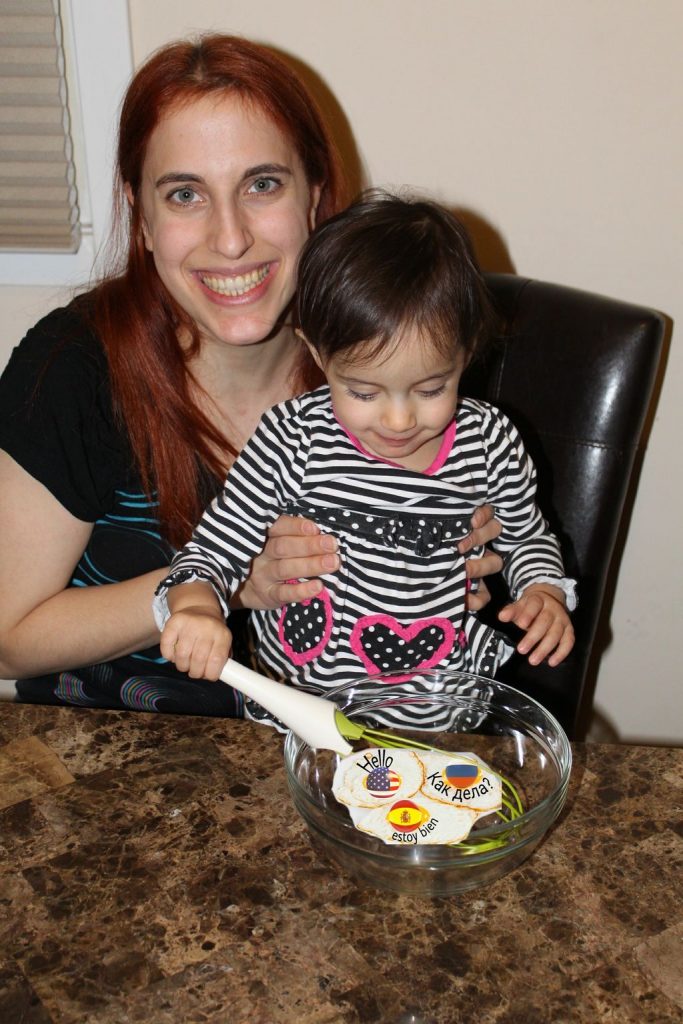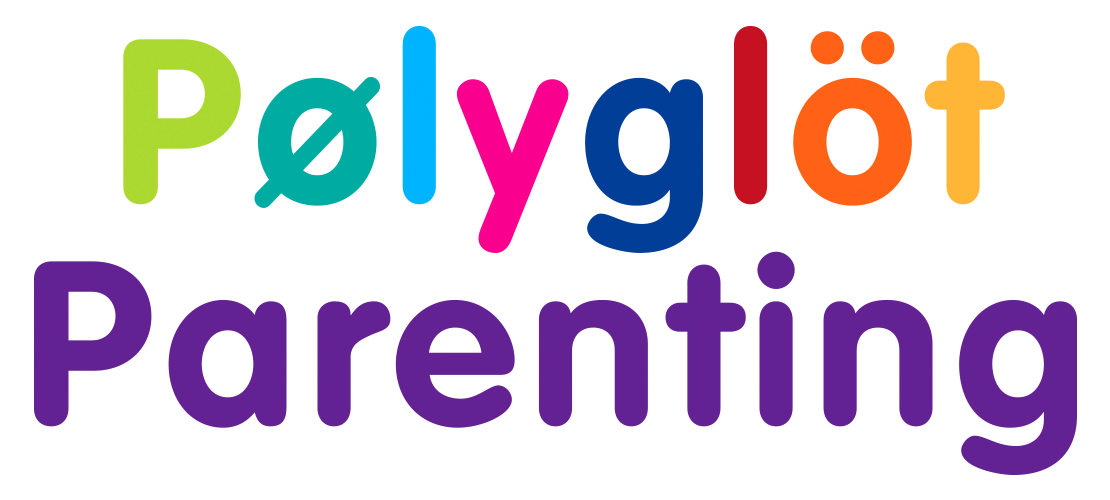4 Must-Know Aspects of How Bilingual Kids Learn Language
The speech and language development paths of monolingual and bilingual children have more in common than not. Bilingual and monolingual children generally experience the same major speech and language milestones. These include starting to babble, saying their first words, starting to form sentences, and being able to tell a complete story.
Still, there are a few unique aspects of language development for children growing up with more than one language. Not all bilingual children experience the language aspects discussed here, but the following four are common enough to keep an eye out for. It can be helpful for parents to know that these aspects can be a typical part of healthy bilingual language development.
Before delving into those unique aspects, though, it may be helpful to have a point of reference for speech and language milestones common to all children. If you wish to take a closer looking at those, there are lots of resources out there for general speech and language development. Here are a couple of good links with accurate information:
Aspect of Bilingual Development #1: Crosslinguistic Influence
The consensus of researchers in the field of bilingual language acquisition is that each language develops separately; children distinguish between their two languages from the start. Yet, the child’s two language systems are not completely sealed off from each other; at times, you can see crosslinguistic influence in a bilingual child’s speech.
Crosslinguistic influence is when a person communicates in one language, and their speech shows features (e.g., grammar, syntax, pronunciation, etc.) of another language they know. It can occur in bilingual speakers of any age, whether an adult learning a new language, or a child being raised with two languages. Crosslinguistic influence occurs in some, but not all, kids during typical bilingual language development.
To illustrate, let's consider an example using Spanish and English. (Note that this particular example happens to pertain to grammar, but crosslinguistic influence can manifest in any aspect of language.) In English, an adjective comes before a noun, whereas in Spanish, most adjectives (including colors) come after the noun. So, someone whose dominant language is Spanish may say “the car red” instead of “the red car” because that reflects the correct word order in Spanish (el coche rojo). When young bilingual children do this, it’s important to understand it as part of exploring and sorting out the grammar of their languages. Indeed, monolingual children make grammatical errors when learning language too (for instance, a monolingual toddler might say “me want truck” as a phase before they learn to say “I want the truck.”). Young children make mistakes as they sort through the system of systems of grammar that they’ve heard. Sometimes, when bilingual children make errors that have elements of crosslinguistic influence, it’s unfairly interpreted through a negative lens as a sign of “confusion”. Yet, a bilingual child making such an error should be no more cause for concern than the example just given of a monolingual child making an error. For parents wondering how to address this, you can continue the conversation including a model of the form you’d like them to use. For example, if your child says “I want the car red,” you can say “here is the red car you wanted” as you hand it to them.
Aspect of Bilingual Development #2: Silent period
Sometimes, when a child is introduced to a second language—especially when they are suddenly immersed, like starting school in a language that’s new to them—they may speak very little, or not at all, for a certain period of time. This is called a silent period of second language acquisition. Not all children go through this phase, and, for those who do, there’s no set amount of time that this period will last. Older children tend to have shorter silent periods than younger children. An older child may have a silent period of several weeks or months, whereas a younger child may not speak the less familiar language for up to six months.
For the children who go through this phase, being silent for a period of time is a response to the situation of being immersed in their new (or non-dominant) language. The silent period allows them to focus on listening, understanding, and absorbing vocabulary, grammar, and structure until they are ready to produce the language themselves. In this situation, the child’s period of silence in their non-dominant language environment then evolves to imitating the speech of others, copying words, copying phrases, quietly producing their own phrases, and, finally, speaking normally. Silent periods that occur as a stage of second language acquisition go away on their own.
If you have concerns about the amount of time that your child has been silent, especially if the child is making no movement over time in the direction of absorbing more and more of their new languages, or if the silence appears to be coupled with anxiety, reach out to an experienced Speech-Language Pathologist for an evaluation. Causes that may merit professional help include selective mutism, anxiety, and medical issues.
Aspect of Bilingual Development #3: Mixing Languages
Mixing grammar and vocabulary from two languages in one sentence is a common and normal stage in bilingual language development. This phenomenon is usually seen in children between the ages of two to four years old. For more information on language mixing, see my previous blog post Dispelling Confusion about Bilingual Confusion.
On the surface, using two languages in one sentence may sound like a child is getting “mixed up” or “confused”, but the reality is more complex. Mixing languages allows children to fill in gaps in their still-developing ability to communicate precisely what they want to say. They are temporarily leaning on their knowledge of one language while working to master the second. After the developmental phase of language mixing, children will be able to switch between speaking each language one at a time without mixing words.
Interestingly, language mixing is not only a phase of typical bilingual language development, but it is also something that bilingual adults may do with other bilingual speakers of their languages. They do this for a variety of reasons, including to fit in, share secrets, or make a point that can only be conveyed perfectly in the other language. Going back and forth between languages is something that doesn’t disappear forever. Rather, as kids grow older, it transforms into an intentional act (called “code-switching”) only done with certain conversation partners or in certain settings.
Aspect of Bilingual Development #4: Language Dominance Shift To Majority Language
Imagine a little girl, Isabella, who has been exposed mostly to Spanish since birth from her parents and grandparents at home, and Spanish is her dominant language. She starts school and is immersed in English for much of the week. As expected, within a few months, Isabella’s language dominance shifts from Spanish to English. At home, she begins mostly responding to her parents and grandparents in English. Since her family understands her in English, and English is a bit easier for her to speak now, she resists her family members’ requests for her to respond in Spanish. Her parents want her to maintain her Spanish skills, but aren’t sure how to proceed.
I often hear from parents who are disheartened that, after years of putting in effort to make sure their child gets plenty of exposure to their heritage language, they have started to face a situation like Isabella's family faces. It may be helpful to know that a shift in language dominance is nearly unavoidable when raising a child in a country (such as the U.S.) where monolingualism in the majority language is the norm. This dominance shift does not mean that your child has lost their heritage language forever, and it does not mean that all the energy that has been put into giving them opportunities to hear the minority language has been for naught. Certainly, it doesn't mean the parents have done anything wrong. It is a case where it is more helpful to prepare than to despair.
Advice for parents who wish to maintain the heritage language includes:
- Learn about what’s typical for bilingual language development so that you won’t be caught by surprise by any bumps in the road. (Reading this blog post is a good start!)
- Don’t be discouraged. Persist in speaking the heritage language to your child, and continue with all the usual ways you’ve exposed your child to your language, even if they reply to you in English/the majority language of your country.
- Find opportunities where your child has a need to speak the minority language in order to be understood. The best ways to do that include making sure your child has consistent interaction with those who are monolingual in the minority language, or having your child be involved with a regular class or program that is conducted in the minority language.
The four aspects outlined here are not indicators of a language disorder, but rather, are simply language differences that are expected in healthy bilingual language development. Such differences can sometimes, on the surface, resemble a language disorder. For this reason, if you have any doubt or concerns about your child’s speech development, it’s important to see a Speech-Language Pathologist with expertise in bilingual issues who either speaks your language or is familiar with the proper protocol for using an interpreter in evaluating a child’s speech.
***
For more tips on raising bilingual children, check out Polyglot Parenting's online course, How to Raise A Bilingual Child.
Or, for individualized advice, families raising bilingual/multilingual children may find it useful to create a custom Family Language Plan with the help of a bilingual professional. If having a guide to help you navigate the ins and outs of implementing effective and realistic bilingual methods and strategies sounds helpful to your family, contact me for a 60 minute initial consultation via Skype.

